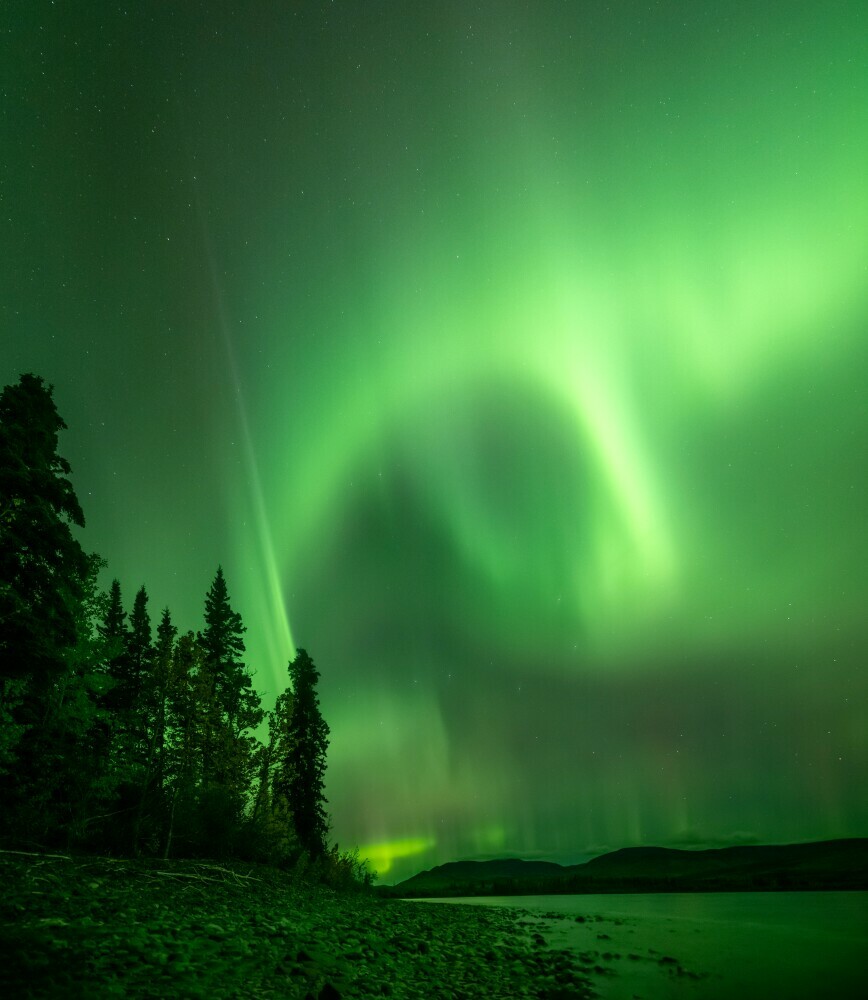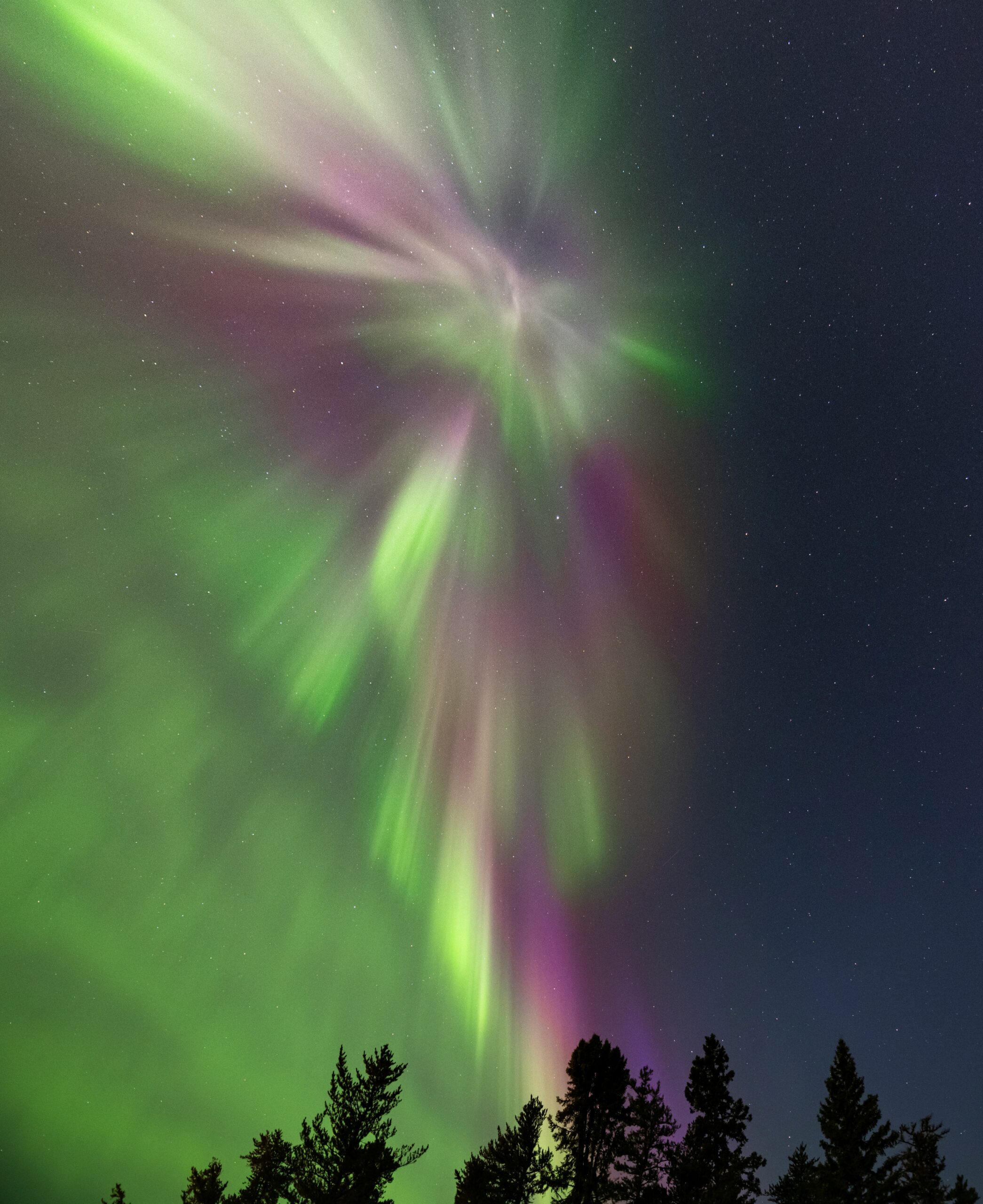 Greg Johnson (2023) [Photograph] Unsplash
Greg Johnson (2023) [Photograph] Unsplash
Imagine a tapestry of hues blanketing the landscape; this is the essence of Autumn. The changing leaves’ vibrant reds, oranges, and yellows create a breathtaking scene. Equally mesmerizing are the night skies, playing host to the spectacular light show known as the Aurora Borealis. The transition from vivid daylight to the enigmatic night skies epitomizes the Autumn experience, particularly in regions close to the poles. In this section, I’ll walk you through the wonders of Autumn foliage and the Aurora phenomena.
The magic of Autumn Colors stems from a symphony of biological processes. It’s the time when the green leaves of summer give way to an array of reds, oranges, and yellows. This transformation results from diminishing chlorophyll, allowing hidden pigments to showcase brilliance. Simultaneously, the display of the Northern Lights, or Aurora Borealis, results from charged particles from the sun striking the Earth’s atmosphere, creating a celestial ballet of light that can be seen predominantly during the Autumn months in high-latitude regions.
To behold such natural marvels, one must venture to the right places. Renowned for its fall foliage, the forests of New England have become a haven for leaf-peepers. At the same time, the expansive taigas of Scandinavia offer a front-row seat to the Aurora Borealis. Combining the gorgeous daytime scenes with the electrifying night spectacles, these destinations are a photographer’s and nature enthusiast’s dream during Autumn.
As Autumn’s mid-point, the Fall Equinox often marks the beginning of the most intense Northern Lights Season. If you’re curious about capturing daytime radiance and nocturnal brilliance, circling this date on your calendar is crucial for planning your Autumn Northern Lights adventure. Heading into the next section, I’ll share invaluable insights on photographing these fleeting moments so your memories of the season’s splendor are sharp, vivid, and lasting.
Photography Under the Autumn Sky: Tips for Seasonal and Aurora Photography
 Greg Johnson (2023) [Photograph] Unsplash
Greg Johnson (2023) [Photograph] Unsplash
Imagine standing beneath a sky painted with fiery hues of orange and red, framed by silhouettes of crisp autumn leaves. Now, envision that same sky transitioning into the deep blues and greens of a night canvas as the Northern Lights begin their celestial ballet. Capturing these moments requires more than just a press of a button; it’s about being prepared, knowing your gear, and understanding the nuances of nature’s displays.
For Fall photography, start with a sturdy tripod, a reliable camera with manual settings, and patience. You’ll aim to catch the golden hour glow on Fall foliage, that moment when sunlight softens and enriches the colors around you. Composition matters; look for contrasts, patterns, and textures in the landscape. Remember, it’s essential to keep your target keywords in mind. Phrases like ‘Scenic Fall Views’ and ‘Photogenic Autumn’ should be part of your narrative, not just for SEO, but because they capture what you aim to immortalize.
When it switches to Aurora Photography, the game changes slightly. You’ll need to explore settings that deal with lower light; understanding exposure, ISO, and shutter speed becomes vital. A wide-angle lens can capture more of the sky’s majesty, while a remote shutter release avoids any camera shake during long exposures. Capture the grandeur of the ‘Autumn Northern Lights’ or the elusive ‘Aurora Borealis’ with your camera’s lens wide open to let in as much light as possible.
The key is to find harmony between your photographic intent and the environmental conditions. Whether it’s the soft rustling of leaves or the silent shimmer of the Northern Lights, your presence and awareness are as crucial as your equipment. Incorporating terms like ‘Fall and Aurora’ and ‘Aurora Chocolate’ into your content can enhance its relevancy, drawing readers closer to the heart of Autumn nights alive with color.
A Travelers Guide to Arctic Autumn Adventures and Aurora Viewing
 Greg Johnson (2023) [Photograph] Unsplash
Greg Johnson (2023) [Photograph] Unsplash
Embarking on an autumn journey to the Arctic presents an opportunity to witness nature’s dual spectacle: the kaleidoscope of fall foliage and the mesmerizing Aurora Borealis. The key is timing and knowing where to go.
When planning your autumn travel, consider the most renowned locations for Aurora sightings. Places like Tromsø, Norway, and Fairbanks, Alaska, offer a front-row seat to the Northern Lights amidst autumn’s amber and gold.
Aurora Hunting is more than just stepping outside and looking up. To increase your chances, check the Aurora forecast, join Northern Lights tours led by local experts, and be ready to stay up late into the night – patience is crucial.
While the beauty of the Aurora and autumn skies is universal, their significance can vary across cultures. In many Arctic regions, the Northern Lights are woven into the fabric of local folklore and underscore people’s deep connections with the land.
Visiting these remote regions during the fall requires a commitment to sustainability. To ensure these wonders remain for generations, minimize your footprint by following Leave No Trace principles, engaging with ecotourism operators, and respecting the local environment.
Embracing the Autumn Nights: The Celestial Dance of the Northern Lights
 Domino Studio (2017) Reykjavík, Iceland [Photograph] Unsplash
Domino Studio (2017) Reykjavík, Iceland [Photograph] Unsplash
As I reflect on the captivating journey between autumn leaves and the celestial ballet of the Northern Lights, I’m reminded of the fleeting nature of these phenomena. The fall night sky is not just a spectacle; it’s a canvas that nature repaints every year, with each brushstroke of color and light unique to the season. The transition from the warm hues of fall foliage to the chilly nights lit by aurora displays a rhythmic dance that calls to all who seek the beauty of the natural world.
Understanding the Northern Lights isn’t solely a scientific pursuit; it involves patience and a dash of awe. Knowing the optimal viewing times—factoring in the fall equinox and the Northern Lights season—increases the likelihood of a memorable experience. However, there’s no perfect formula to predict when the Aurora Borealis will grace the skies with its presence. Embracing the uncertainty is part of the adventure and makes the moment of witnessing the display more cherished.
As the nights draw in and the temperatures drop, pursuing aurora displays is an ACTIVE INVITATION to experience the wonders of the autumn sky. Technology aids in this quest, but the stories, camaraderie among fellow aurora chasers, and our connection to the cosmos genuinely define the experience.
To conclude, the partnership of autumn’s daytime splendor and nighttime wonders offers a powerful reminder of our place in the universe. It’s a reminder that a parallel world of serene beauty unfolds above us amidst life’s constant busyness. So, grab your camera, don your coat, and venture into the crisp autumn air. The majestic display of autumn colors by day and the wondrous Aurora Borealis by night await those willing to look up and embrace the season’s splendor.
(This post may contain affiliate links. If you make a purchase, I may receive a small commission at no cost to you. Thank you!)

